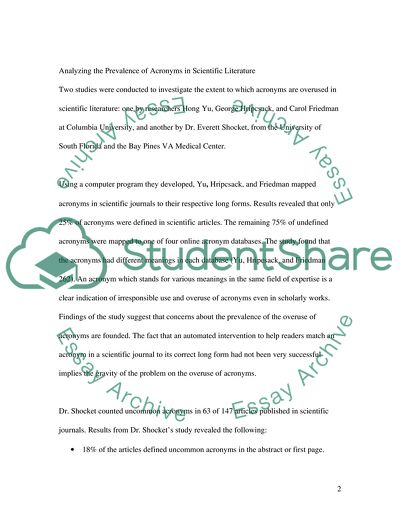Cite this document
(Overuse of Acronyms in Professional Writing Term Paper, n.d.)
Overuse of Acronyms in Professional Writing Term Paper. Retrieved from https://studentshare.org/humanitarian/1555471-overuse-of-acronyms-in-professional-writing
Overuse of Acronyms in Professional Writing Term Paper. Retrieved from https://studentshare.org/humanitarian/1555471-overuse-of-acronyms-in-professional-writing
(Overuse of Acronyms in Professional Writing Term Paper)
Overuse of Acronyms in Professional Writing Term Paper. https://studentshare.org/humanitarian/1555471-overuse-of-acronyms-in-professional-writing.
Overuse of Acronyms in Professional Writing Term Paper. https://studentshare.org/humanitarian/1555471-overuse-of-acronyms-in-professional-writing.
“Overuse of Acronyms in Professional Writing Term Paper”. https://studentshare.org/humanitarian/1555471-overuse-of-acronyms-in-professional-writing.


